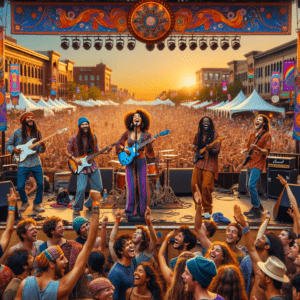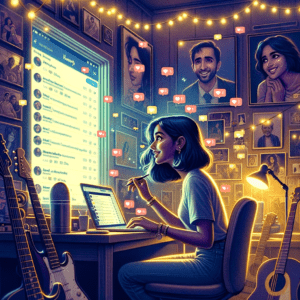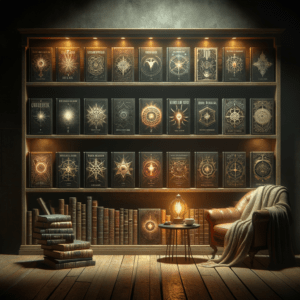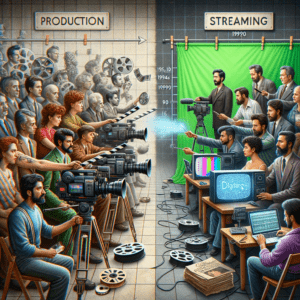I’ve always had this soft spot for classical music, you know? Those swaying melodies and grand symphonies just grab at my heart. So whenever I hit that dreadful writer’s block or life goes all chaotic on me, diving into Beethoven’s symphonies or Mozart’s piano concertos is my little escape hatch. I often find myself pondering how in this whirlwind world – full of viral TikTok songs and chart-topping pop hits – the gentle echoes of classical music still manage to weave through modern creativity.
The Timeless Nature of Classical Music
Classical music has this magical quality—it’s timeless, really. A Beethoven symphony isn’t just some jumble of notes tossed together; it’s like a living, breathing thing! Listening to it, I can almost picture young Mozart, furiously scribbling notes with a kind of unmatched genius that feels so alive even today. It’s not just about having a classical piece on repeat to soothe the soul (even though it sure does!). It’s more about how deeply it’s interwoven into today’s musical tapestry. It’s like this sneaky thread that finds its way into everything.
Compositional Influences
Then there’s the structure of these compositions! Most pop songs stick to that catchy verse-chorus-verse blueprint, right? But classical music introduces all these motifs and developments. Just take Coldplay’s “Viva La Vida,” for instance. It has this complex orchestral arrangement that totally mirrors a symphonic narrative. It’s like a wink to classical influences. The song takes you on a journey, rather than just racing to the hook, kinda like a movement in a symphony.
And it’s not just bands, folks. Freddie Mercury’s “Bohemian Rhapsody” blends rock with classical vibes in those crazy operatic sections! Classical music seems to give modern artists this unofficial permission slip to break rules and make magic.
Mood and Emotion
Oh boy, the emotions in classical music! It packs a punch that cuts right through the airwaves. Modern artists are sure keen on tapping into this emotional depth. Just think about movie scores—can you imagine “Jaws” being even half as terrifying without John Williams’ haunting musical magic? Hans Zimmer, the legend, often mentions classical influences in his orchestrations, painting vivid stories with his soundscapes.
On a cozier, more intimate note, artists like Adele with her heart-wrenching “Someone Like You” bring raw emotion reminiscent of an intense aria. It’s like she takes the pain and sews it right into her melodies. You feel those classical ties instantly.
Sampling and Blending
Then there’s the art of sampling, which only weaves classical threads deeper into modern music. It’s fascinating when you hear artists pick harmonies or entire melodies from classical pieces to blend seamlessly into new creations. I love seeing those ‘aha’ faces when folks realize Nas’s “I Can” samples from Beethoven’s Für Elise. It’s like a time-traveling musical fusion masterpiece.
Kanye West is a genius bridge-builder with this, right? His “Graduation” album has these classical samples that beautifully illustrate how, even centuries apart, music can speak the same universal language.
The Role of Training and Influence
Many musicians nod to some classical training during their careers. This foundation deeply influences their style, their approach, even their instruments. Listen to Lady Gaga belt out a ballad, and bam, you can’t ignore her classical training vibes shining through that pop star sparkle. It’s like they stock up on a musical toolkit, ready to build something entirely their own.
Ed Sheeran talks about his influences too, from Bach to Van Morrison. I find it kinda endearing that these influences are like these trusty maps in his artistic pocket, guiding him as he crafts his next hit.
Resistance and Embrace
Not every artist is upfront about their classical loves. Some might try to shake off those classical roots, eager to craft something radically fresh and unique. Yet, even if it’s subtle, the pull of classical influence is undeniably strong. It’s like this invisible force that nudges harmonies, tempos, and even narratives.
And that’s cool. Art thrives on this vibrant interplay of tradition and innovation. It’s an exciting dance between resisting the old and embracing the new, constantly evolving and surprising us.
A Personal Reflection
Not gonna lie, when I was a young buck, I resisted classical music too. I craved edgy beats and snappy rhythms. But as I got older, I circled back, appreciating how the creation of today’s music still echoes those of long ago. With fresh ears, I catch the whispers of Bach in pop songs or the echo of Vivaldi in cinematic scores.
It’s seriously magical when you let those ancient compositions merge with the modern beat. They remind us of our roots and how timeless human emotion and creativity truly are. As artists continue to innovate, there’s this comforting thought that deep down, there’s always a nod to the maestros of the past—the invisible guides gently shaping where music flows next. It’s all pretty darn wonderful, if you ask me.













